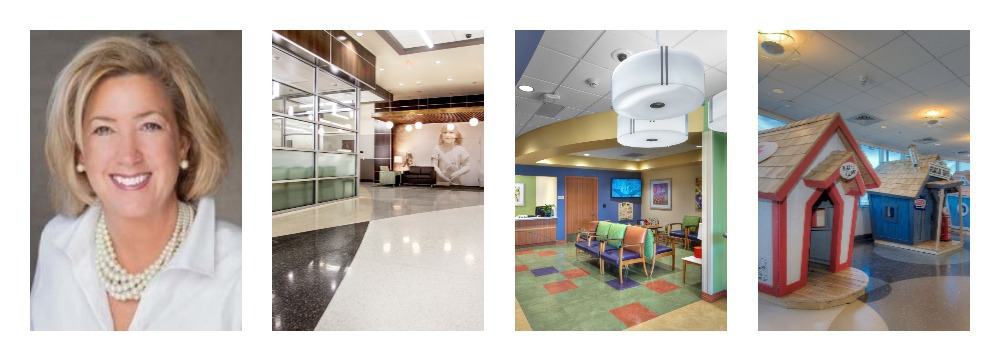Blog
Healthcare Design Magazine’s Take 5 with Rebecca Donner

Healthcare Design Magazine has a series where they ask leading healthcare design professionals, firms, and owners about things that has gotten their attention and share some ideas on these subjects. They recently spoke to Rebecca Donner, the owner and founder of healthcare interior design firm Inner Design Studio (Nashville, Tenn.). Here, she shares her thoughts on wayfinding, the evolution of products for healthcare spaces, and the dos and don’ts of placing artwork in a facility. The entire article from the magazine is below. To read more Take 5’s and visit the Healthcare Design Magazine website, click here.
1. The rise of DIY decor
With the rise in home and garden shows and social platforms that encourage DIY decor comes an array of people who believe that interior design basically consists of enhancing a space’s visual appeal. However, professional interior design is largely determined by psychology and evidence-based data to create spaces that function well at all levels, including emotionally, mentally, physically, and economically. The DIY trend can affect clients’ expectations in terms of setting realistic timelines for project completion. For example, we’ve had several instances where we’ve been asked to produce a “quick” digital rendering of a space when, in reality, a thorough rendering can take 2-3 days to complete. Home decorating shows sometimes give the impression that producing high-quality work can be done with the click of a button.
2. The art of placing art
When choosing the type and placement of artwork in hospitals and clinics, it’s important to keep the patient population in mind. Spaces that are geared towards seniors, for example, shouldn’t include pieces that have a feeling of solitude or remind them of activities in which they can no longer participate. Similarly, labor and delivery wings shouldn’t feature images of mothers and babies, as not every expecting mother gets to leave with a newborn child. When considering placement, the artwork should be positioned based on the patient’s viewpoint, which may mean hanging items lower on the wall to accommodate people in wheelchairs. It’s also important to look for pieces with calming colors and to avoid abstract themes, as unfamiliar images can cause confusion or fear in children and seniors.
3. Visual cues in wayfinding
Signage isn’t the only method for guiding patients down the right paths. If used correctly, colors, patterns, and art placement can help patients know where they are, find their destination, and return easily without getting lost. For patients with dementia, shadow boxes filled with familiar items (such as photos, important artifacts, etc.) outside of their bedroom doors can help them recognize which room is theirs. Designers should also consider language preferences or physical impairments when creating wayfinding systems to ensure all patients, visitors, and staff feel comfortable navigating the corridors.
4. Designing for safety in behavioral healthcare
Patient and staff safety should always be top of mind when designing healing spaces, and this is particularly important in behavioral health settings. For example, group therapy can often bring out intense emotions, so room furnishings should be large and weighted so they can’t be lifted in frustration. Patient beds should be attached to the floor so that harmful items can’t be hidden behind or underneath them. Designing psychiatric facilities often involves weighing the patient’s privacy and safety to find a solution that best addresses both needs.
5. Revolutionary products
We’ve seen a shift in the industry toward products that save space in medical facilities while also providing a more seamless experience for patients. One example is a combined patient transport and examination chair that can be used to transport a patient to an exam room and conduct an examination without having to move to a separate exam table. Staying innovative as a designer means staying on top of a constant stream of new products.
Sources:







